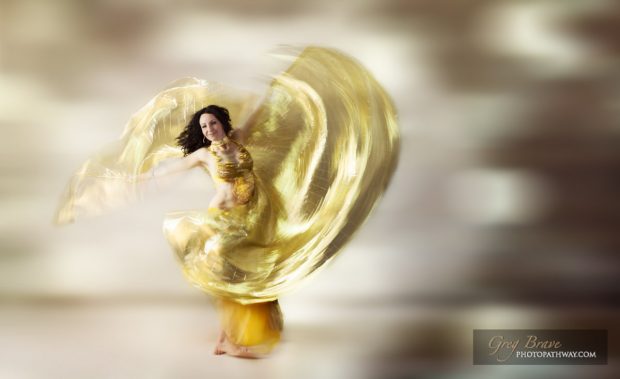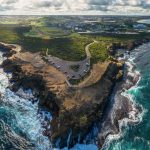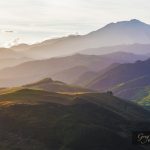At one point in my photographic career I’ve noticed that many photographers proud themselves in shooting only in manual mode. I get it, they want to emphasize the fact that they mastered exposure technique and know exactly what f-stop and shutter speed to set for each lighting scenario.
“I shoot manual only” people generally look down on all the regular folk who are not in their club.
Well, guess what, in my opinion it is not wise and plain unnecessary to shoot on manual in this day and age.
Let me defend the case of Aperture Priority mode as the only one you’ll ever need to use whether you are an amateur or even pro photographer. There’s only one caveat here – if you shoot high speed events such as sports or racing you might want to consider Shutter Priority mode, but I’ll get to this down the road.
Why Aperture Priority you ask? It’s simple – because it gives you full control of your camera without forcing you to always be cautious of accidentally under/over exposing your shot. I wrote ‘accidentally’ on purpose, since you still have full artistic freedom of intentionally blowing out your highlights or deepening the shadows.
But first thing first – what is Aperture Priority mode?
In Aperture Priority mode you set your desired aperture and camera sets the shutter speed according to its built-in light meter. From my description it seems that you get only to control the depth of field (since that’s what changing f/stop does to the image). However, in addition to setting the aperture in this mode, you can also set exposure compensation, which leads us to the next question.
What is exposure compensation? By setting exposure compensation you basically tell your camera to use its built-in light meter to set the exposure, but then intentionally over or under expose the scene by the amount that you specify. For example you are shooting a sunset pointing your camera directly at the setting sun. Built it light meter will set exposure according to the bright sun, leaving the rest of the scene under-exposed. So if you want to achieve correct exposure, you need to set exposure compensation at about +1 or +1.5 stops. This way the camera will ‘add’ more exposure time to its measurement.
Now that we are familiar with exposure compensation, add it to your arsenal when using Aperture Priority mode, and you are almost set for any shooting scenario. The remaining bit of knowledge to mastering Aperture Priority is the ISO control.
By setting ISO you control your sensor’s sensitivity to light. The lower the ISO number, the less sensitive your camera will be to light. But why do we need different values of ISO? Example to the rescue again! Let’s say you are shooting people indoors where the light is dim, and people are moving. At ISO 100 and f/8, your shutter speed will have to be 1/15th of a second in order to correctly expose your scene. But at 1/15s anything that is even slightly moving will be blurred in the resulting image. One solution would be to open your aperture to f2.8 (for example), but what if that’s not something you want to do? Or in some places the light is so dim that even at f2.8 your exposure times are too long. The only option you have is to set ISO higher. In the example above you’ll need to go up to ISO 400 or even 800 to get acceptable shutter speeds.
The lowest ISO is usually 50, which you would normally only use when shooting in bright daylight. The highest ISO differ between cameras, the highest that I heard of was 409,600! It means that this camera can basically shoot in very dark conditions and still produce visible details. Remember though, you always want to shoot at lowest ISO possible because the higher your ISO, the more noise you’ll have in the image.
That’s it! By setting your desired f/stop, exposure compensation, and ISO, you have full control of your camera as if you were shooting in manual but still let your camera do the tedious job of metering the light so you don’t have to worry about it.
Let’s reinforce this claim with a few examples.
1. Shooting sunset with sun visible in the frame.
a. Set the desired f-stop. I’ll go with f/11 to achieve optimal overall sharpness and depth of field for my taste.
b. Since the sun is in the frame, the camera’s built in light meter will under-expose the scene, so I’ll set exposure compensation to +1 stop.
c. If I use tripod, I don’t care that the exposure time might be too long, so I don’t mess with ISO and leave it at the lowest setting possible for my camera. If I don’t use tripod, I half press the shutter button and see what shutter speed my camera chooses. If it is too long, I’ll bump the ISO to the next level (ISO levels are 50-\>100-\>200-\>400-\>800-\>etc.) and check the exposure time again.
2. Shooting portraits indoors.
a. Set the desired f-stop. I’ll go with f/4 in this case to achieve low depth of field that will give me enough sharpness for all facial features but also a pleasantly blurred background.
b. Check that there’s no exposure compensation set, because I want my portraits to be correctly exposed using the available light.
c. Half press the shutter button and see what shutter speed my camera chose at the lowest ISO setting. Then bump up the ISO until the shutter speed is acceptable. Shooting handheld I normally don’t go slower than 1/30th of a second, or even 1/60th if my hands are a bit shaky.
3. Shooting rays of light protruding through trees in the forest.
This is not an obvious thing to achieve. I am talking about those beautiful rays of light seeping through the dense foliage, and hitting the low vegetation.
a. Set your f-stop at whatever value that you want. No suggestions here on my part.
b. Here’s the important part – set the exposure compensation to about -1.5 stops. Reason being – you want the rays of light to stand out, so you need to under expose your scene. Don’t worry about the rays – they are so bright that they will still be perfectly visible, but your background now will be dark enough for the rays to stand out!
c. As usual, if you are not using tripod, half-press the shutter button and check the exposure time. Adjust the ISO accordingly.
[box type=”bio”]
In conclusion – Aperture Priority mode can be used to deal with any photographic situation without the hassle of manually metering the light as you would need in manual mode. Therefore it is to me an absolute winner between those two modes. If you have another opinion, please, feel free to share it in the comments as I am always willing to learn.
[/box]
Oh, I forgot to mention the Shutter Priority mode for sports and stuff. When you shoot fast moving objects such as race cars or football players, and you want to freeze their motion in your frame (in other words produce sharp images), you need to make sure that your shutter speed is short enough. Let’s say 1/500th of a second and shorter. Achieving that is easy with Shutter Priority mode, in which you set the desired shutter speed, and camera sets the f/stop. In Shutter priority mode you can still control all the rest of the settings by using exposure compensation and ISO controls exactly as you would in Aperture Priority mode.










stunning pictures